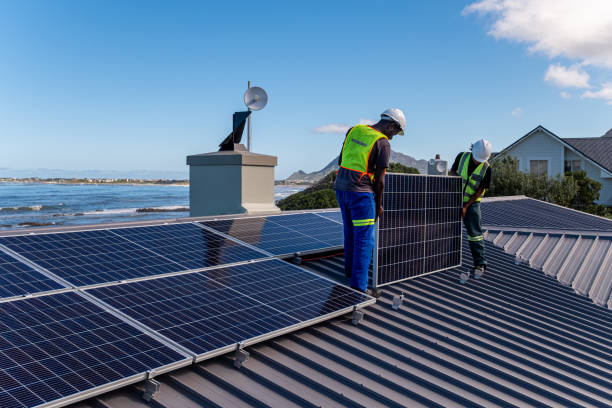
Lifeline
What Is Lifeline Assistance?
A federal initiative called Lifeline Assistance aims to lower the cost of communication services for low-income people. Initiated in 1985, this valuable program ensures that every American can access vital communication tools regardless of financial status. The service plays a pivotal role in bridging the digital divide, making it possible for everyone to stay connected, whether keeping in touch with loved ones or accessing emergency services. Numerous resources, including the Federal Communications Commission (FCC), offer comprehensive insights into the program’s history and significance, emphasizing its ongoing impact on communities nationwide.
For individuals considering applying, it’s crucial to understand the Lifeline qualifications. Knowing these criteria can ensure that potential applicants are well-prepared and meet all requirements, thus avoiding common pitfalls that might delay the approval process.
Eligibility Criteria
To qualify for Lifeline Assistance, applicants must meet specific federal poverty guidelines or be enrolled in certain federal assistance programs. These include significant programs like Medicaid, Supplemental Security Income (SSI), and the Supplemental Nutrition Assistance Program (SNAP). Understanding these criteria ensures that applicants save time applying when they might not qualify. Various eligibility details are shared by reputable sources, such as the USA.gov website, which thoroughly guides individuals through the requirements and helps them assess their eligibility against the current standards.
Additionally, some states may have supplementary criteria or offer additional benefits, increasing the accessibility and reach of the Lifeline program. Applicants should check both federal and state-specific requirements to ensure compliance.
How to Apply
Applying for Lifeline Assistance is a systematic process that demands meticulous attention to detail. Interested parties should start by identifying approved Lifeline service providers within their state. From there, applications can be processed directly through these providers or the Lifeline National Verifier’s online platform. The latter offers a streamlined process, significantly reducing the time and effort involved in traditional paper applications.
Ensuring every section of the application is filled out accurately is paramount. It’s best to review all requirements laid out by the service provider or the National Verifier before submission to avoid common mistakes that may lead to delays. Moreover, understanding how the verification process works can help applicants prepare better and answer any queries that might arise during the application review.
Steps to Apply
- Identify an approved Lifeline service provider in your area. This phase is crucial because it establishes the framework for the application process.
- Gather all the necessary documentation beforehand to avoid last-minute issues. Having everything in place will ensure a smoother application process.
- Complete the application form through the Lifeline National Verifier, ensuring all details are correct and up-to-date.
- Apply using the required documents online or through the service provider.
Following these steps diligently increases the chances of a successful application and helps applicants promptly receive the benefits they are entitled to.
Required Documentation
Having the proper documentation ready is crucial when applying for Lifeline Assistance. Generally, applicants must provide two documents: proof of income and participation in a federal assistance program. Acceptable documents include tax returns, pay stubs, official benefit letters, and other verifiable sources of revenue. Ensuring these documents are current, clear, and legible will ensure a smooth application process. Proper documentation supports the authenticity of the application, significantly improving approval chances.
It’s advisable to keep additional copies of all submitted documents for personal records. This practice not only helps in the event of any discrepancies but also assists during annual recertification or if the need arises to reapply.
Maintaining Eligibility
Once approved, Lifeline recipients must diligently maintain their eligibility status. Annual recertification is mandated to confirm that recipients continue to meet the qualifying criteria. Failing to recertify can lead to the termination of benefits, which could disrupt essential communication services. Staying updated on the timelines and requirements for recertification is vital. Regularly visiting official program websites and keeping records of all related communications can help recipients remain informed and prepared.
Tips for Maintaining Eligibility
- Mark calendar reminders for annual recertification to ensure deadlines are met.
- Please save copies of all submitted paperwork and communication about the Lifeline program to ensure that any possible problems are promptly resolved.
- You should regularly check official Lifeline Assistance resources for updates on any program changes that might affect eligibility criteria or application processes.
These proactive steps help ensure that beneficiaries remain within the program and continue to enjoy the Lifeline, which offers essential communication services.
Common Questions about Lifeline Assistance
Many individuals have queries regarding various aspects of the Lifeline Assistance program. Common questions often pertain to whether multiple household members can receive assistance or what steps to take if there’s a change in income or family status. Clarifying these doubts is essential, as misunderstandings can lead to disqualification or delays in receiving benefits. The Lifeline section on the FCC’s official site and other governmental resources are invaluable for the most accurate and up-to-date information. These platforms provide detailed FAQs, guides, and support channels to address applicants’ most pressing concerns.
Benefits of Lifeline Assistance
The Lifeline program is not solely about reducing phone bills; it’s fundamentally about empowering individuals and families to stay connected. Communication services enable access to job opportunities, healthcare, educational resources, and social connections. Lifeline contributes significantly to its beneficiaries’ overall well-being and economic mobility by reducing the barriers to these services.
Moreover, the ability to stay connected in emergencies can be life-saving. For example, having access to a phone ensures immediate contact with emergency services and receiving critical updates during natural disasters or other crises. Thus, the Lifeline program is essential in giving disadvantaged people a safety net and guaranteeing that everybody has an equal shot at security and education. This service supports individuals in their daily lives and contributes to communities’ overall resilience and cohesiveness.
Lifeline Assistance stands out as a vital program that bridges the digital divide, ensuring everyone has the means to stay connected and secure, irrespective of their financial circumstances. Its continued success and importance cannot be overstated.
Keep an eye for more latest news & updates on Wellknown Figure!






